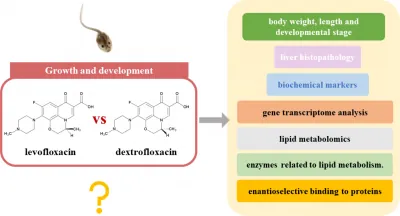
Microplastics and the Sharp Rise of Idiopathic Pulmonary Fibrosis: What You Need to Know
2025-09-04
Author: Nur
Microplastics Linked to Lung Disease
A groundbreaking study suggests that polyethylene terephthalate microplastics (PET-MPs), commonly found in our environment, may not only initiate but also worsen idiopathic pulmonary fibrosis (IPF)—a serious lung disease with uncertain origins.
The Worrying Rise of IPF Cases
Amid growing concerns from public health officials about the implications of microplastics, it's important to note that the incidence of IPF has been soaring. According to research from 2015, cases of IPF have increased by approximately 11% annually.
Microplastics: An Invisible Threat
Microplastics, defined as plastic particles smaller than five millimeters, permeate our lives through industrial emissions, the degradation of plastic products, and even household items. These tiny pollutants can be ingested, inhaled, or absorbed through the skin, paving their way into the human body.
The Lung-Damaging Effects of PET-MPs
The study's authors identified PET-MPs as the most prevalent microplastics we encounter daily. They pointed out that these particles can incite oxidative stress and inflammation in lung cells, leading to chronic lung injuries—a potential precursor to conditions like IPF.
Connecting the Dots: How PET-MPs Contribute to IPF
Research indicates that PET-MPs can penetrate lung tissue and may even mimic fibrosis-like conditions. The study highlights a concerning lack of research directly linking these microplastics to the onset of IPF, with the authors proposing that PET-MPs may disrupt crucial molecular targets and signaling pathways in the body.
Identifying Key Molecular Targets
Using state-of-the-art predictive tools and toxicology analyses, researchers pinpointed three key molecular targets—AKT1, PIM1, and PIK3CD—that may be affected by PET-MPs. This interaction seems to alter metabolic pathways vital for lung health, emphasizing an urgent need for further investigation.
Time for Action: What Can Be Done?
The study calls for stricter regulations to monitor and control microplastics in our environment. The authors emphasize that we must build databases to track long-term exposure and conduct comprehensive studies to assess the broader health impacts of microplastics on populations.
The Need for Awareness and Further Research
While this research sheds light on a potentially critical factor in the rise of IPF, the authors caution that these findings are based on computational models and need to be confirmed through laboratory experiments. They highlight the importance of raising public awareness about the risks posed by microplastics.
Conclusion: A Call for Vigilance
As the world grapples with the implications of microplastics, it's vital for both individuals and policymakers to take action. Understanding the health risks can help in mitigating exposure and fighting against diseases like IPF. Keep abreast of this unfolding story—your health may depend on it!



 Brasil (PT)
Brasil (PT)
 Canada (EN)
Canada (EN)
 Chile (ES)
Chile (ES)
 Česko (CS)
Česko (CS)
 대한민국 (KO)
대한민국 (KO)
 España (ES)
España (ES)
 France (FR)
France (FR)
 Hong Kong (EN)
Hong Kong (EN)
 Italia (IT)
Italia (IT)
 日本 (JA)
日本 (JA)
 Magyarország (HU)
Magyarország (HU)
 Norge (NO)
Norge (NO)
 Polska (PL)
Polska (PL)
 Schweiz (DE)
Schweiz (DE)
 Singapore (EN)
Singapore (EN)
 Sverige (SV)
Sverige (SV)
 Suomi (FI)
Suomi (FI)
 Türkiye (TR)
Türkiye (TR)
 الإمارات العربية المتحدة (AR)
الإمارات العربية المتحدة (AR)